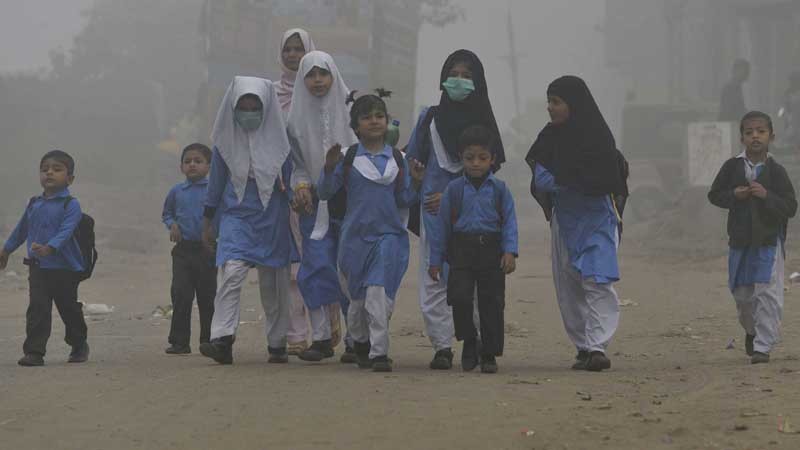
Air pollution, one of the major causes of deaths in South Asia, needs urgent attention of policy makers

Imagine the cause of most deaths in South Asia -- war, terrorism, road accidents, malaria, or any other? While we do lose many precious lives in South Asia due to the above-mentioned reasons, the worst killer -- air pollution -- goes unnoticed. The issue is ignored by those who suffer from it as well as by our policy makers and planners.
According to the recently published State of Global Air report (published by the US-based Health Effects Institute and the University of British Columbia), In South Asia life expectancy of a child born today will be shortened by 20 months due to air pollution. Deaths caused due to air pollution are exceeding the number caused from accidents, malaria, or malnutrition. India, Bangladesh, China, and Pakistan are the worst South Asian countries for living due to bad air pollution. The worst five countries with high level of air pollution are in South and East Asia. People are exposed to alarmingly high levels of air pollution both indoor as well as outdoor in these countries.
During the year 2017, South Asian countries had highest annual average exposures to particulate matter 2.5 (PM2.5 or small particle less than 2.5 micron diameter). Just to give you an idea, the diameter (width) of average human hair is 70 micron. This means almost 30 PM2.5 can be placed on the tip of human hair. Due to their small size, they get suspended in the air and it is so easy to inhale them.
Among the five worst countries affected by air pollution, Nepal has highest particulate matter levels of 100 microgram per cubic meters followed by India 91 micrograms per cubic meters, Bangladesh 61 microgram per cubic meters and Pakistan 58 microgram per cubic meters. From East Asia, China stands at 53 microgram per cubic meter for particulate matter 2.5.
Air pollution in South Asian countries contribute to heart strokes, lung cancers, diabetes and pulmonary diseases. Young children are more vulnerable because they breathe more air than adults. As per United Nations, 93 percent of children under the age of 15 years inhale dangerously high levels of particulate matter on daily basis. According to World Health Organization, annually 600,000 children of same age bracket die because of exposure to both indoor and outdoor air pollution. Sources of air pollution include vehicular emissions, industrial emissions (small and big), indoor air pollutants, and small industrial units.
Air pollution is not only affecting our health but also our economy as it affects seasonal crops production patterns. If issue of air pollution is tackled with proper planning then it can add to 2 percent of GDP.
A national action plan on air pollution is needed at national level that should include phasing out of 2-stroke and diesel public service vehicles. Air monitoring stations should monitor air quality regularly and there is need of more stations for accurate data availability. Vehicle inspections system should be enforced and alternate fuels options should be promoted.
Pollution control technology should be introduced at industrial level and environmental protection agencies should make sure that industries are compliant with national environmental quality standards.
At regional level existing platforms like South Asian Association for Regional Cooperation (SAARC) should be used to come with a regional air pollution control strategy. They say air knows no boundaries and same is the case of air pollution. Like minded parliamentarians and climate change/environment ministers should sit together and set targets to lower air emissions. Together they should approach developed countries for the payment of loss and damage they have caused to us.
While governments, at national and regional levels, will think of strategies to reduce air pollution, we the people of South Asia cannot absolve ourselves from the responsibility to leave clean air for our future generations. Media and advocacy groups need to run awareness campaigns to educate masses about the long-term impacts of air pollution. Each one of us would have to minimise our air pollution footprint through bringing a change in our daily lives.